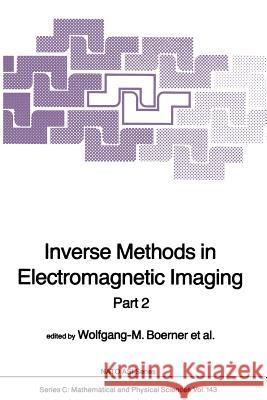Inverse Methods in Electromagnetic Imaging: Part 2 » książka
Inverse Methods in Electromagnetic Imaging: Part 2
ISBN-13: 9789401088282 / Angielski / Miękka / 2013 / 1347 str.
In recent years, there has been an increased interest in the use of polarization effects for radar and electromagnetic imaging problems (References 1, 2, and 3). The problem of electro- magnetic imaging can be divided into the following areas: (1) Propagation of the Stokes' vector from the transmitter to the target region through various atmospheric conditions (rain, dust, fog, clouds, turbulence, etc.). (2) Scattering of the Stokes' vector from the object. (3) Scattering of the Stokes' vector from the rough surface, terrain, and the volume scattering. (4) Propagation of the Stokes' vector from the target region to the receiver. (5) The characteristics of the receiver relating the Stokes' vector to the output. The propagation characteristics of the Stokes' vector through various media can be described by the equation of transfer. Even though the scalar equation of transfer has been studied extensively in the past, the vector equation of transfer has not received as much attention. In recent years, however, a need for further study of the vector radiative transfer theory has become increasingly evident and several important studies have been reported. This paper presents a general formulation of the vector theory of radiative transfer under general anisotropic scattering conditions. Some useful solutions are also presented 4 8 for several practical situations. - 2. GENERAL FORMULATION OF VECTOR RADIATIVE TRANSFER THEORY Let us consider the plane-parallel problem Shovlll in Figure 1.











